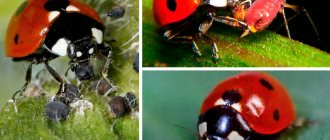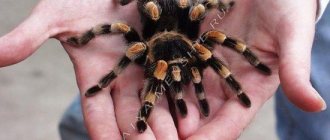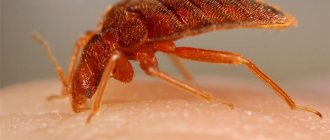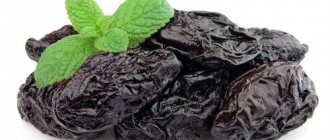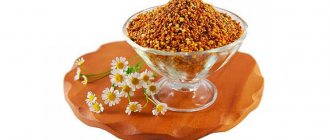The ladybug is a small, brightly colored bug that is familiar to everyone. The red back with black dots attracts the attention of adults and children when the insect crawls along a green leaf. In addition to its charming appearance, pleasing to the eye, the insect has a quality that benefits people - this predatory creature destroys insect pests in household plots and vegetable gardens.
So some summer residents breed ladybugs at home, then plant them in the garden to control pests without the use of chemicals, using environmentally friendly methods.
Ladybug habitat
Ladybugs are distributed almost throughout the planet, with the exception of the permafrost zone and Antarctica. According to different biological classifications, researchers identify from 6 to 8 thousand species of ladybugs. They are not only red with black dots, but also vice versa. There are yellow, white, blue and even black beetles. There may be 2 points, several or none at all.
They live on trees and bushes, in the grass. They are active in the cool morning or evening hours.
In nature
In temperate latitudes, ladybugs overwinter:
- in the roots of trees;
- in piles of fallen leaves;
- in cracks under the bark of trees;
- in holes under stones;
- under the top layer of soil.
At the same time, the insects cluster together. The accumulation of identical individuals allows each to maintain a body temperature higher than in the environment.
On a note! The orange trail that a disturbed ladybug leaves behind is hemolymph, which replaces blood for insects. It is distinguished by bugs from the knee joints. The liquid has a very caustic composition, which makes ladybugs inedible for most insectivorous vertebrate creatures.
Give up chemistry
Pesticides do not differentiate between good and bad insects; they kill them all. If you have previously treated the plants with chemicals, ladybugs will definitely not land on them.
Once you have attracted beneficial insects, you can encourage them by periodically feeding them with a homemade liquid food solution. Mix equal parts water and brewer's yeast with a little honey and spray throughout the garden. Pour the solution into an aerosol can and spray it onto the surface of the plants.
Nutrition
The vast majority of ladybugs are entomophagous predators, i.e. they eat insects. The diet includes:
- different types of garden aphids;
- pests from the coccid family: scale insects, scale insects, false scale insects;
- adult individuals and egg clutches of leaf beetles;
- corn moth.
On a note! Some types of ladybugs are herbivorous, while others are even pests of agricultural crops, such as potatoes, melons, beans, and forage grasses.
The mouthparts of ladybugs are of the gnawing type. Their jaws are capable of biting through the integument of insect pests in order to then suck out the nutritious liquid.
One of the distinctive qualities of these creatures is their incredible gluttony. Adult specimens are capable of destroying 100 or more adult aphids per day, while larvae are slightly smaller – up to 70. This quality makes ladybugs the main orderly for agro-industrial territories, private plots, and vegetable gardens.
What you will need
- Sugar, aphids or honey
- Leaves
- Container
- Bottle caps
- Ladybug
- Grass
- Stones
- Sticks
Article information
This page has been viewed 109,785 times.
Was this article helpful?
Each of us has been familiar with these small, cute bugs since childhood, whose red bodies are decorated with funny black dots. It turns out that these harmless creatures are capable of destroying entire hordes of dangerous garden pests that cause a lot of trouble for people. Gardeners and gardeners are well aware of aphids, as well as what the proximity to them can lead to. But, having settled, for example, ladybugs on your plot, you don’t have to worry about your harvest; aphids will not harm it.
Of course, it will be very difficult for one insect to cope with such a task, which means you need to turn to those who raise large numbers of insects for help. And try to buy a large batch from them.
The idea of building your own business by growing ladybugs seems tempting to many. Today we will talk to you about what you need to know and do to make this activity not only enjoyable, but also profitable.
Why are insects bred?
It is difficult to call ladybugs domestic insects. However, they are often bred for biological control purposes:
- At the end of the warm season, summer residents themselves catch adult insects, leave them for reproduction, and then release them on their own plot next spring;
- for commercial purposes - for sale in private farms and farmsteads.
If you are lucky enough to save a ladybug from freezing in the fall, you can leave it for the winter and release it into the wild next season.
At home, ladybugs are able to actively reproduce. In artificially created conditions, the reproduction process is very active, so the number of insects increases quite quickly. Both fertilized ladybird eggs and healthy mature individuals for individual breeding are suitable for sale.
Homemade
Ladybugs grow quite quickly.
- The female lays 20-40 yellow eggs.
- After a week, larvae emerge from them. Outwardly, they are completely different from adult insects of their species; they can be compared to a crocodile. The larvae have a large head, an elongated spindle-shaped body, and 3 pairs of legs. The colors are bright, repelling predators. Sickle-shaped jaws. The larvae feed on the same types of insects as the adults.
- After a month, the larva pupates.
- An adult insect lives up to 2, rarely up to 3 years.
Where to find insects?
Do you want to get some ladybugs? There is a lot of time for this - from early spring to the end of summer, insects are active and lead their usual way of life. Most often they are collected mechanically. To do this, they go to the edge of the forest, to a field, or to a ravine. But how can we see small insects in the motley, multi-colored palette of the plant world? It turns out that there are plants that attract ladybugs. Therefore, it is worth taking a closer look at tansy, yarrow, daisies, dill and other members of the Asteraceae family. If you do not come across these plants, go to a buckwheat field or a field sown with oats.
What to feed a ladybug at home?
Ladybugs at home can certainly eat the same things as in the wild. However, it is unlikely that it will be possible to provide a large colony of insects with the usual “prey”. That's why ladybugs eat at home:
- sugar and yeast solution;
- steamed raisins;
- white part of the onion;
- an aqueous solution of sugar or honey;
- finely chopped sweet apple;
- jam, marmalade.
The insect is small, but quite voracious and eats a lot. You need to feed the bugs 2 times a day in tiny portions. Food can be given, for example, on the tip of a toothpick.
Do they feed in their natural environment in winter?
In winter, insects have no need for food: they either sleep or are in a state of suspended animation.
Over the summer, sugar and glycerin manage to accumulate in their tissues. In order not to burst from the temperature drop when cold weather sets in, they have to remove a large amount of fluid from the body. The main task of ladybugs at the moment is to find warm places for wintering. A large number of insects can group together for these purposes in one place. Ladybugs usually prefer dry leaves, bark or window cracks as shelters.
But you should always remember: for such a small predator, a huge human hand poses a serious danger. Do not rush to completely plow the area, or spray the garden with poisons - you will lose your tiny helpers forever.
How to arrange a ladybug's home?
The housing in which the ladybug will spend the winter must protect it from drafts, frost and at the same time overheating, and attacks from pets and children. Suitable for these purposes:
- windowsill;
- gap between window frames;
- barn;
- cellar;
- garage.
The easiest way is to place chopped straw or corn tops at the bottom of a glass jar so that the insect can hide there. Cover the top of the container with gauze to allow fresh air to flow. Place the jar in a cool place, do not shake or move it.
Important! There is absolutely no need to place insects in the freezer. It's too cold there, they'll die.
At home, ladybugs live well in large colonies: adult insects together with larvae, which usually does not happen in nature. However, this is only possible if there is enough food for all individuals.
Care and caution
The ladybug is small (an adult reaches an average of 0.8−1 cm) and fragile, so any attempt to pick it up or play with it can lead to negative consequences. Precautionary and careful measures when caring for a bug are the following:
- It is better to catch the animal with a net.
- In order to take an insect in your hand, you need to place your finger next to it and wait for it to climb onto it.
- The ideal temperature for life and reproduction of Coccinellidae is considered to be +20 ⁰ C, so it is recommended to avoid hypothermia.
Do not forget that your pet is an insect, so after each contact with it it is recommended to wash your hands thoroughly with soap.
Content Rules
Keeping a ladybug at home is not difficult. It doesn’t matter whether you are going to breed insects for sale, or release the foundling into the sky in the spring. Care consists of:
- in organizing housing with shelter;
- availability of food;
- clean water.
Content
Moss can be laid out in the insectarium if it is possible to plant living leafy plants on which the natural prey of bugs, aphids, can breed. Ladybugs need to be cared for in the same way as other insects bred in captivity.
- Do not pick it up with your hands to avoid crushing it.
- Avoid excessive humidity and high temperatures.
- The container should be spacious enough and allow air to pass through.
- In the insectarium, place food (for example, cotton wool soaked in sugar syrup) and containers with water for drinking.
Remember! During the winter, insects hibernate. Ladybugs sleep in captivity, as in natural conditions, buried shallowly in soft, loose litter.
Interesting to know
Folklorists believe that the name of the beetle is directly related to the ancient Slavic pagan goddess of agriculture and fertility Mokosh. The flight of an insect from the finger was accompanied by the well-known request for bread (“fly to heaven, bring me bread”) as a symbol of productivity and prosperity. This explains her divinity.
In English-speaking regions it is called Lady bird or Lady beetle. The general word Lady, according to scientists, implies the image of the Virgin Mary, and Catholics consider the insect itself to be the insect of the Virgin Mary.
In a number of world cultures, killing this species is prohibited as they are believed to bring good luck.
Beetle helping gardeners
Ladybugs or Coccinellidae are a member of the beetle family whose main diet consists of aphids. In search of food, ladybugs migrate for the winter and return in the spring. In some way they are migratory insects. They are engaged in the extermination of aphids from spring to late autumn. After this, eggs are laid near the aphid colony.
Somewhere from 14 0C, ladybugs fill meadows, fields and other flowering and fragrant lands. Alfalfa and barley fields are the most pleasant for cows. These territories are so attractive for Coccinellidae because they are extremely attractive to the main nutritional unit of ladybugs, namely aphids.
During the larval stage, the ladybug consumes about a thousand aphids. In its adult state, an individual eats two hundred insects. Thus, the Ladybug is a farmer’s best friend, just as a dog is a man’s best friend.
How birds sleep
Birds that spend the night not in tree branches practically sleep standing up. Why don't they fall to the ground? Birds have a long tendon, about the same length as the bird's leg, connected to a strong muscle. When the bird sits, the tendon stretches, acts on the fingers, and they compress, covering the branch. This mechanism is very reliable. It happens that dead birds are found on tree branches: they do not fall, because even after death their fingers continue to tightly grip the branch.
Many birds sleep with their heads tucked under their wings and their feathers raised to protect them from the cold. Herons and storks often sleep standing on one leg. Some parrots in South America sleep in an original way. They hang upside down, clinging to a branch with one leg. Some swifts sleep in a large ball.
Bird sleep is associated with some special metabolic issues. In birds, metabolism is very intense. The normal temperature of birds is 42 C, that is, the temperature that a person experiences only with a serious illness. During sleep, chemical processes in the birds' bodies slow down, and body temperature drops to 20 C.
Many water birds sleep "float". Often ducks and swans are captured by ice: while they sleep, the water around them freezes. Seagulls also sleep on the water. They claim that they can fall asleep for a short time during flight. The ability to sleep in flight is also attributed to birds that can make long flights, such as albatrosses. This may be true, but albatrosses undoubtedly spend most of their sleep on the water. Some animals sleep underwater.
